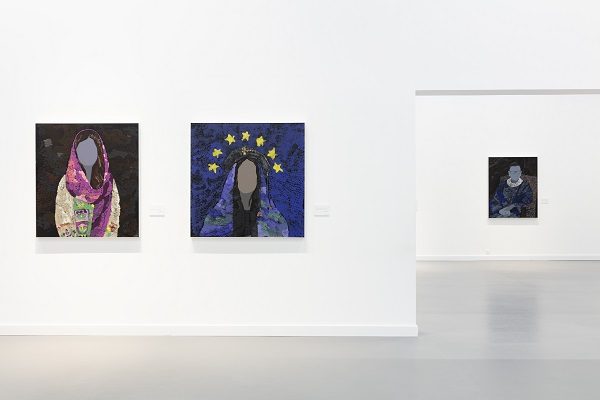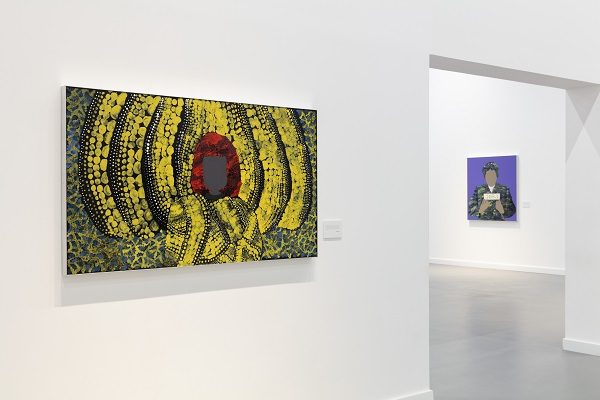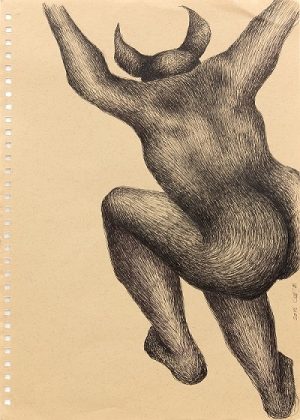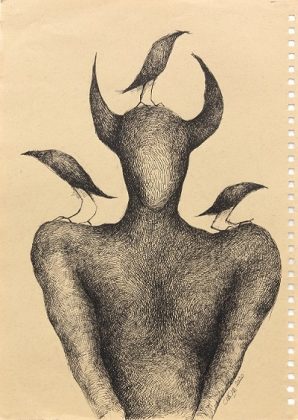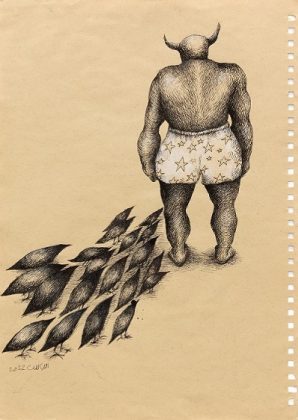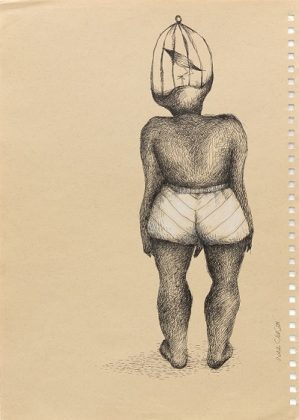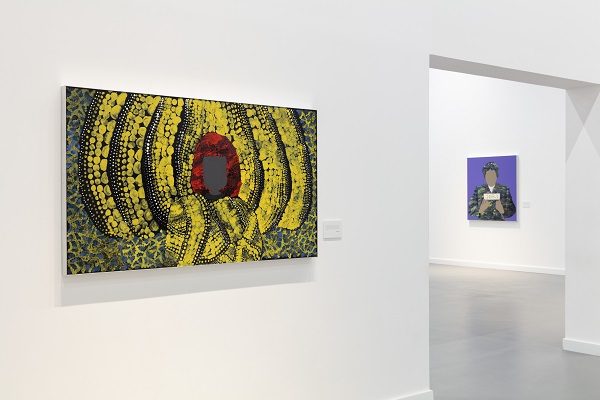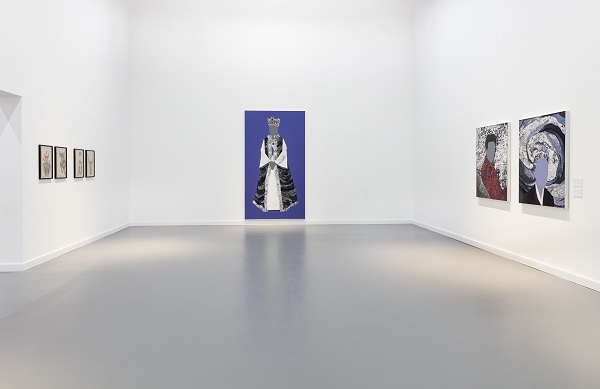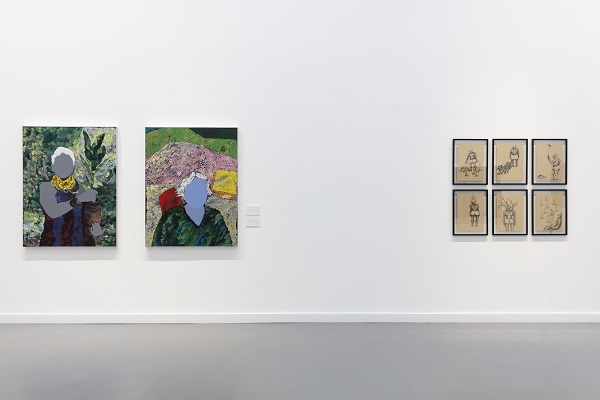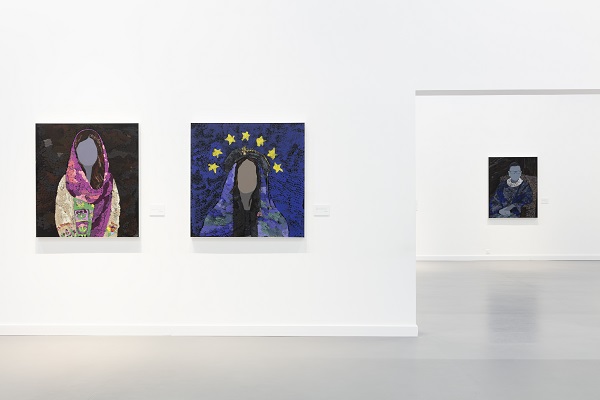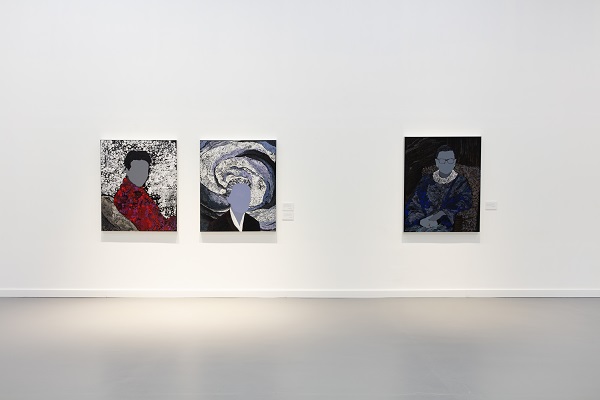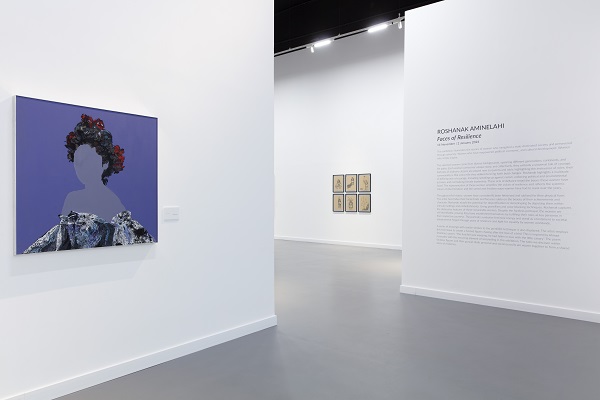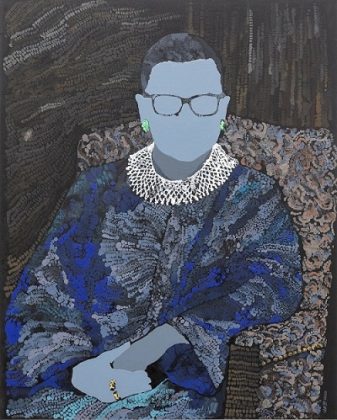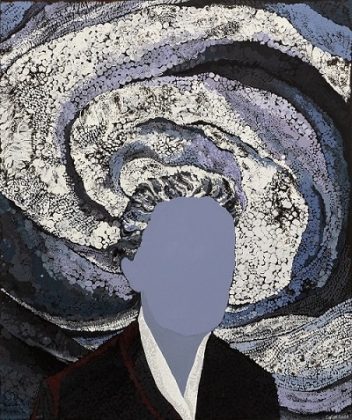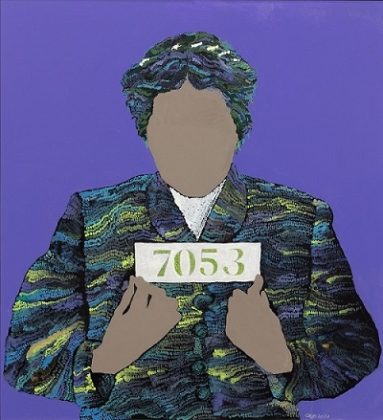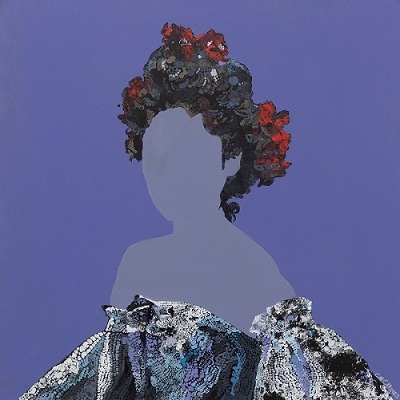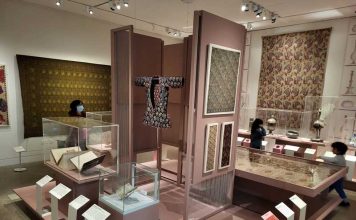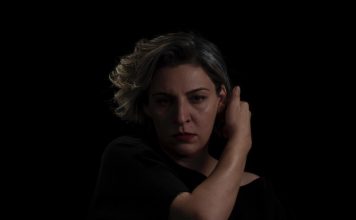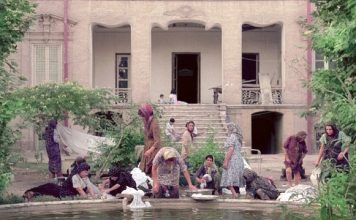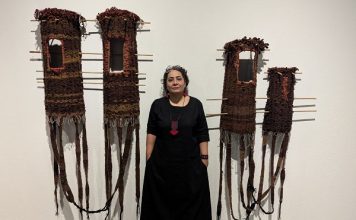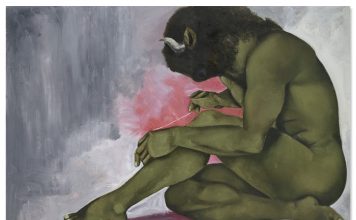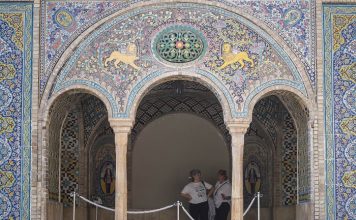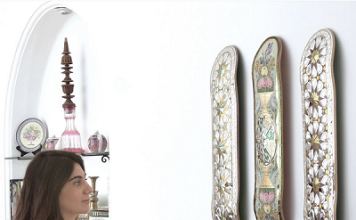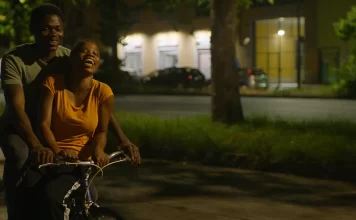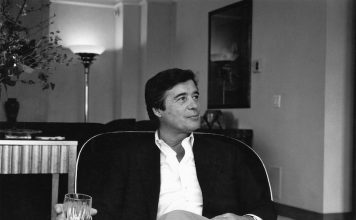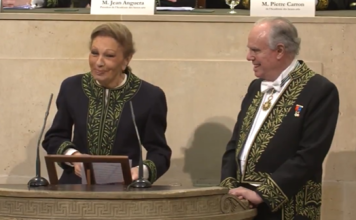By Rawaa Talass
“Faces of Resilience” is the title of an exhibition at Dubai’s Ayyam Gallery in which the artist Roshanak Aminelahi pays homage to notable women in history and contemporary culture, such as Empress Farah Pahlavi, actress Golshifteh Farahani, African-American civil rights activist Rosa Parks, and French philosopher Simone de Beauvoir, among others.
[aesop_image img=”https://kayhanlife.com/wp-content/uploads/2023/11/Roshanak-Aminelahi-set-up-show-Gallery-Ayyam-Nov-14-2023-Dubai-©Pia-Torelli-9448-copy.jpg” panorama=”off” credit=”Roshanak Aminelahi set up show Gallery Ayyam Nov 14, 2023 Dubai ©Pia Torelli-9448 copy” align=”center” lightbox=”on” captionsrc=”custom” captionposition=”left” revealfx=”off” overlay_revealfx=”off”]
[aesop_image img=”https://kayhanlife.com/wp-content/uploads/2023/11/Roshanak-Aminelahi-set-up-show-Gallery-Ayyam-Nov-14-2023-Dubai-©Pia-Torelli-9427-copy.jpg” panorama=”off” credit=”Roshanak Aminelahi set up show Gallery Ayyam Nov 14, 2023 Dubai ©Pia Torelli” align=”center” lightbox=”on” captionsrc=”custom” captionposition=”left” revealfx=”off” overlay_revealfx=”off”]
[aesop_image img=”https://kayhanlife.com/wp-content/uploads/2023/11/RA036-Roshanak-Aminelahi-Golshifteh-Farahani-2023-Mixed-media-on-canvas-100-x-100-cm.jpg” panorama=”off” credit=”Roshanak Aminelahi, Golshifteh Farahani, 2023, Mixed media on canvas, 100 x 100 cm” align=”center” lightbox=”on” captionsrc=”custom” captionposition=”left” revealfx=”off” overlay_revealfx=”off”]
Yet the women in these portraits are, in fact, faceless.
For Aminelahi, her homeland, Iran is an emotional subject. Her new show was inspired by personal struggles, as well as by the cruel death of Mahsa Amini last year and all the pro-women protests it sparked around the world. The show is on until Jan. 2, 2024.
In a conversation with Kayhan Life at the gallery, Aminelahi, who was born in Iran in 1972, talked about Persian mythology, internal beauty, and the Iranian women she admires.
Your work at the gallery is clearly female-centered. What did you want your show to essentially project?
I didn’t want to make it a “political” show. This show is about strength. As a woman living in a society where you’re surrounded by men, it’s always been difficult. Here, what I tried to show was what women from different countries went through in different roles, and how they established themselves.
In the exhibition, I have a portrait of Queen Elizabeth II, who, as the longest-reigning monarch in British history and as a woman, made significant contributions. Her leadership and dedication to public service have inspired generations. Also, Shahbanou [Empress] Farah did a lot for art and culture. As the Queen, she was involved in various initiatives that aimed to empower and support women: from advocating for women’s education, healthcare, and social rights to playing a role in promoting cultural and social programs that improved the status of women in Iran significantly during her time as Empress.
What all of these women have in common is resilience. I hid their faces because I believe that even if you don’t see them, they are such bold characters that you can figure them out.
Yet hiding their faces can be interpreted in different ways.
Absolutely, another interpretation is the fact that everybody is looking at the superficial thing, but the beauty for me in these women is in their acts, personalities, and what they’ve achieved.
Is there a particular woman you depicted who fascinated you the most?
Each woman has a story. It started with Shahbanou Farah. When she left Iran, she lost her husband whom she adored, and her two children. She’s still standing – her head held high with a lot of dignity, class, and patience – and people love her. It’s admirable.
Can you talk about some of the other Iranian women you portrayed?
There’s the Iranian-French actress Golshifteh Farahani. I really like her personality, because she’s a warrior. I watched an interview of hers, where she really opened up. She talked about how she left Iran, came back, and was questioned by the authorities. That was a very brave thing for her to go through. She had to leave her country and family behind, which is very difficult. She had to start from scratch in another country. But she survived and made it happen.
Tell us more about your background and how your interest in art began in the first place.
I’ve been drawing and painting since forever. At the age of 8 or 9, my parents put me in private drawing classes. Years later, I started taking proper academic classes. Throughout my life, I was always learning with some of the best teachers in Tehran. School was there, but making art was always going on in parallel. When I wanted to get into university, I chose graphic design. I got my Master’s degree and started working in the best advertising agency in Tehran, which was interesting. Advertising taught me a lot, especially the importance of having an idea. I didn’t make any kind of shift to art, because it was always in my life.
Is there a certain theme you tend to explore the most in your work?
For us Iranians, because of what we’re going through in our country, I find myself constantly looking back. I don’t look forward. My work is poetry-related; I remember from my childhood how my mother read to me the poetry of Hafez and his Shahnameh [the Book of Kings].
Whenever I want to paint, I have my poetry books, which I read, and my museum books from Iran. I go back to them. I have nothing to look forward to right now. Somehow, we have these characters in Shahnameh, like the legendary hero Rostam, who always comes and rescues Iran. I’m fixated with this character.
There’s another female warrior that I relate to. Her name is Gordafarid. I feel all of us are living this: She’s a princess kind of character, but when it is necessary, she puts on a helmet and goes to war.


